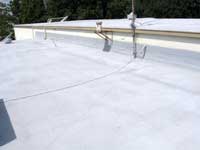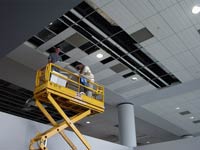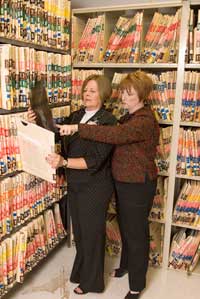view all Case Studies
Television Station’s New Roof Generates High Ratings

Lafayette, La., is home to high temperatures and humid air. Maintaining a comfortable indoor atmosphere to ensure occupant health and safety while monitoring utility costs is a constant concern for property managers and building owners
April 9, 2008 -
Roofing
Lafayette, La., is home to high temperatures and humid air. Maintaining a comfortable indoor atmosphere to ensure occupant health and safety while monitoring utility costs is a constant concern for property managers and building owners.
For KATC TV, it was time to address this problem and renovate its 24,000-square-foot roof. Holes led to water leaks in the studio, and cooling the building efficiently and evenly proved difficult because conditioned air escaped from gaps in the roof.
“Water was collecting, there were gaping holes everywhere, and the roof was bubbling,” says Andrew Shenkan, the station’s building manager. “We were constantly hiring contractors to repair the roof, but they couldn’t keep the water out. Although we got used to having buckets beside our desks, we knew that something more permanent had to be done.”
Station officials decided spray-applied polyurethane foam (SPF) from BASF Polyurethane Foam Enterprises was best-suited for the project. Their main objective was to stop the leaks, but they also needed to improve energy efficiency and reduce cooling costs.
SPF combines superior water and air-leak resistance with an insulation R-value of 6.0 per inch. Louisiana is in a hurricane zone, so station officials also considered SPF’s wind-uplift resistance and severe-weather-protection properties.
The number and scope of penetrations for a station’s antennas and satellite dishes can be difficult for conventional roofing systems. As a spray-applied system, polyurethane foam makes detailing easier, providing leak-free protection at lower labor costs.
The project was completed in less than a month, without any downtime or production interference.
“The roof is working out exceptionally well,” Shenkan says. “It’s much easier to cool the building, and now the temperature is even in every part of the station. We are a lot more comfortable in the office now. It used to be that people would always tell us how awful our roof was. Now it’s the opposite.
“Whenever we have people come work on our satellite dish or air conditioning, they tell us how great the roof looks. And just imagine how I feel, as the building manager, knowing that my roof is expected to last for years to come. It’s very reassuring.”
Next
Read next on FacilitiesNet











